Theoretical Investigations of the Headland Turning Agility of a Trailed Asymmetric Implement-and-Tractor Aggregate
Abstract
1. Introduction
2. Materials and Methods
2.1. Theoretical Considerations
2.2. Data for Numerical Analysis
- maximum value of angle for right-side turn max.r = 0.54 rad (31°);
- maximum value of angle for left-side turn and max.l = 0.94 rad (54°).
3. Results and Discussion
3.1. Evaluation of Ramin
3.2. Evaluation of the Turning Agility Indicator K and Kp
- (a)
- the average speed of the implement-and-tractor aggregate on the turning strip should be equal to the maximum allowed for the effective conditions of the operation (for most agricultural machine-and-tractor aggregates, not exceeding 2.5 m s−1, with the minimum value no less than 1 m s-1);
- (b)
- the average angular velocity of the turn of the aggregating tractor’s driven wheels should be 0.22 s−1; furthermore, the optimal turning angular velocity of the steering wheel of the tractor performed by the driver can be carried out in the range ω = 0.20–0.22 rad s−1, and the minimum frequency is ω = 0.10 rad s−1.
- = 1/0.22 = 4.5 m rad−1;
- = 2.5/0.22 = 11.4 m rad−1;
- = 2.5/0.1 = 25.0 m rad−1.
3.3. Evaluation of Ropt and
3.4. Evaluation of Emin
3.5. Numerical Results
- minimum radius pertinent to the right-side turn m;
- minimum radius pertinent to the left-side turn m.
- for U-turn with a straight strip
- for pear-shaped loop-turn.
- m corresponding to ;
- m corresponding to .
4. Conclusions
Author Contributions
Funding
Acknowledgments
Conflicts of Interest
References
- Kamilaris, A.; Prenafeta-Boldú, F.X. Deep learning in agriculture: A survey. Comput. Electron. Agric. 2018, 147, 70–90. [Google Scholar] [CrossRef]
- Liakos, K.G.; Busato, P.; Moshou, D.; Pearson, S.; Bochtis, D. Machine Learning in Agriculture: A Review. Sensors 2018, 18, 2674. [Google Scholar] [CrossRef] [PubMed]
- Manetto, G.; Cerruto, E.; Pascuzzi, S.; Santoro, F. Improvements in citrus packing lines to reduce the mechanical damage to fruit. Chem. Eng. Trans. 2017, 58, 391–396. [Google Scholar]
- Jha, K.; Doshi, A.; Patel, P.; Shah, M. A comprehensive review on automation in agriculture using artificial intelligence. Artif. Intell. Agric. 2019, 2, 1–12. [Google Scholar] [CrossRef]
- Bulgakov, V.; Pascuzzi, S.; Adamchuk, V.; Kuvachov, V.; Nozdrovicky, L. Theoretical study of transverse offsets of wide span tractor working implements and their influence on damage to row crops. Agriculture 2019, 9, 144. [Google Scholar] [CrossRef]
- Huang, P.; Luo, X.; Zhang, Z. Field verification of the autonomous agricultural machine headland turning control method. Int. Agric. Eng. J. 2016, 25, 98–105. [Google Scholar]
- Bochtis, D.D.; Griepentrog, H.W.; Vougioukas, S.; Busato, P.; Berruto, R.; Zhou, K. Route planning for orchard operations. Comput. Electron. Agric. 2015, 113, 51–60. [Google Scholar] [CrossRef]
- Bochtis, D.D.; Vougioukas, S.G. Minimising the non-working distance travelled by machines operating in a headland field pattern. Biosyst. Eng. 2008, 101, 1–12. [Google Scholar] [CrossRef]
- Sabelhaus, D.; Roben, F.; Meyer zu Helligen, L.P.; Schulze Lammers, P. Using continuous-curvature paths to generate feasible headland turn manoeuvres. Biosyst. Eng. 2013, 116, 399–409. [Google Scholar] [CrossRef]
- Engelhardt, H. Auswirkungen von Flächengröße und Flächenform auf Wendezeiten, Arbeitserledigung und verfahrenstechnische Maßnahmen im Ackerbau. Ph.D. Thesis, Institut für Landtechnik, Universität Giessen, Giessen, Germany, 2004. [Google Scholar]
- Bulgakov, V.; Ivanovs, S.; Adamchuk, V.; Nadykto, V. Theoretical investigation of turning agility of machine and tractor aggregate on basis of ploughing and intertilling wheeled tractor. In Proceedings of the 15th International Scientific Conference: Engineering for Rural Development, Jelgava, Latvia, 25–27 May 2016; Volume 15, pp. 1077–1084. [Google Scholar]
- Bulgakov, V.; Pascuzzi, S.; Nadykto, V.; Ivanovs, S. A mathematical model of the plane-parallel movement of an asymmetric machine-and-tractor aggregate. Agriculture (Switz.) 2018, 8, 151. [Google Scholar] [CrossRef]
- Gyachev, L. Dynamics of the Machine and Tractor and Automobile Aggregates; A Monograph; Rostov State University: Rostov-on-Don, Russia, 1976; 192p. [Google Scholar]
- Backman, J.; Piirainen, P.; Oksanen, T. Smooth turning path generation for agricultural vehicles in headlands. Biosyst. Eng. 2015, 139, 76–86. [Google Scholar] [CrossRef]
- Wong, J.Y. Theory of Ground Vehicles; John Wiley & Sons, Inc.: New York, NY, USA, 2001; 558p. [Google Scholar]
- Gusjkov, V. Tractors: Theory; Technics: Moscow, Russia, 1988; 376p. [Google Scholar]
- Kutjkov, G. Tractors and Cars; Theory and Technological Properties; SpecAgrarian science: Moscow, Russia, 2004; 504p. [Google Scholar]
- Bulgakov, V.; Ivanovs, S.; Nadykto, V.; Kuvachov, V.; Masalabov, V. Research on the turning agility of a two-machine aggregate. INMATEH-Agric. Eng. 2018, 54, 139–146. [Google Scholar]
- Graf Plessen, M.M.; Bemporad, A. Reference trajectory planning under constraints and path tracking using linear time-varying model predictive control for agricultural machines. Biosyst. Eng. 2017, 153, 28–41. [Google Scholar] [CrossRef]
- Bulgakov, V.; Nadykto, V.; Kaletnik, H.; Ivanovs, S. Field experimental investigations of performance-and-technological indicators of operation of swath header asymmetric machine-and-tractor aggregate. In Proceedings of the 17th International Scientific Conference Engineering for Rural Development, Jelgava, Latvia, 23–25 May 2018; Volume 17, pp. 227–233. [Google Scholar]
- Bulgakov, V.; Grinik, I.; Lezhenkin, A. Dynamics of the Grain Harvesting Aggregates; Agricultural science: Kiev, Ukraine, 2010; 276p. [Google Scholar]
- Bulgakov, V.; Pascuzzi, S.; Santoro, F.; Anifantis, A.S. Mathematical Model of the Plane-Parallel Movement of the Self-Propelled Root-Harvesting Machine. Sustainability 2018, 10, 3614. [Google Scholar] [CrossRef]
- Kyurchev, V.M. Mechanical and Technological Foundations of Aggregating Ploughing and Intertilling Tractors; A Monograph; Institute for Agricultural Engineering and Electrification: Glevaha, Ukraine, 2015; 44p. [Google Scholar]
- Masalabov, V. Determination of the Turning Mode Indicator of a Two-Machine Seed Machine-and-Tractor Aggregate; Proceedings of Tauria Agrarian University: Melitopol, Ukraine, 2012; Volume 2, pp. 3–7. [Google Scholar]
- Nadykto, V. Analysis of the Turning Agility of the Machine and Tractor Aggregates on the Basis of Modular Means of Energy. Sci. Bull. Tavria Univ. Agric. 2005, 29, 28–34. [Google Scholar]
- Powell, N.; Boyette, M. Agricultural robotics using a zero turning radius platform. In Proceedings of the ASAE Annual International Meeting, Ottawa, ON, Canada, 1–4 August 2004; pp. 4223–4228. [Google Scholar]
- Iofinov, S. A Handbook for the Operation of the Machine-and-Tractor Fleet (Справoчник пo эксплуатации машиннo-трактoрнoгo парка); Agropromizdat: Moscow, Russia, 1986; p. 272. [Google Scholar]
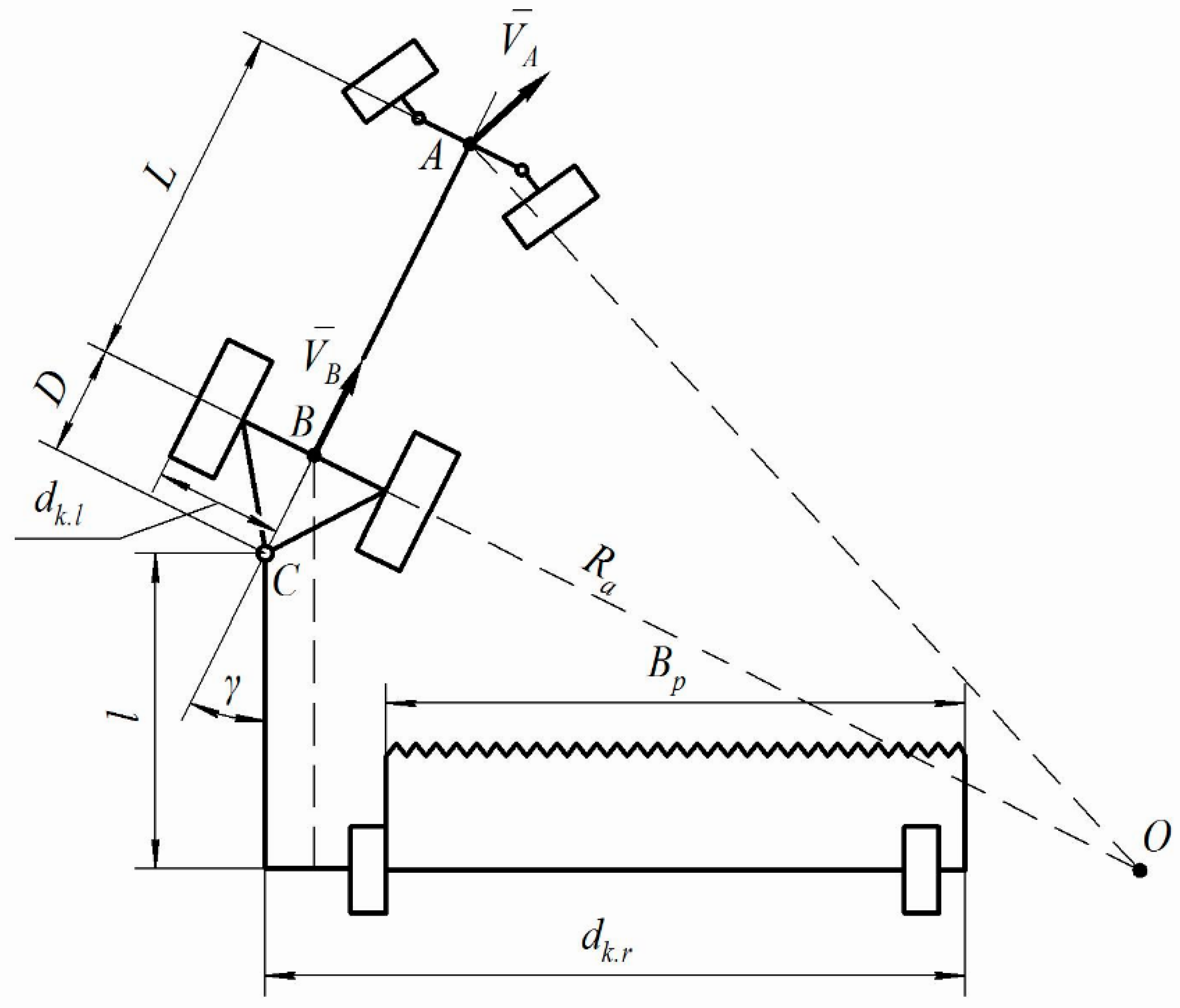
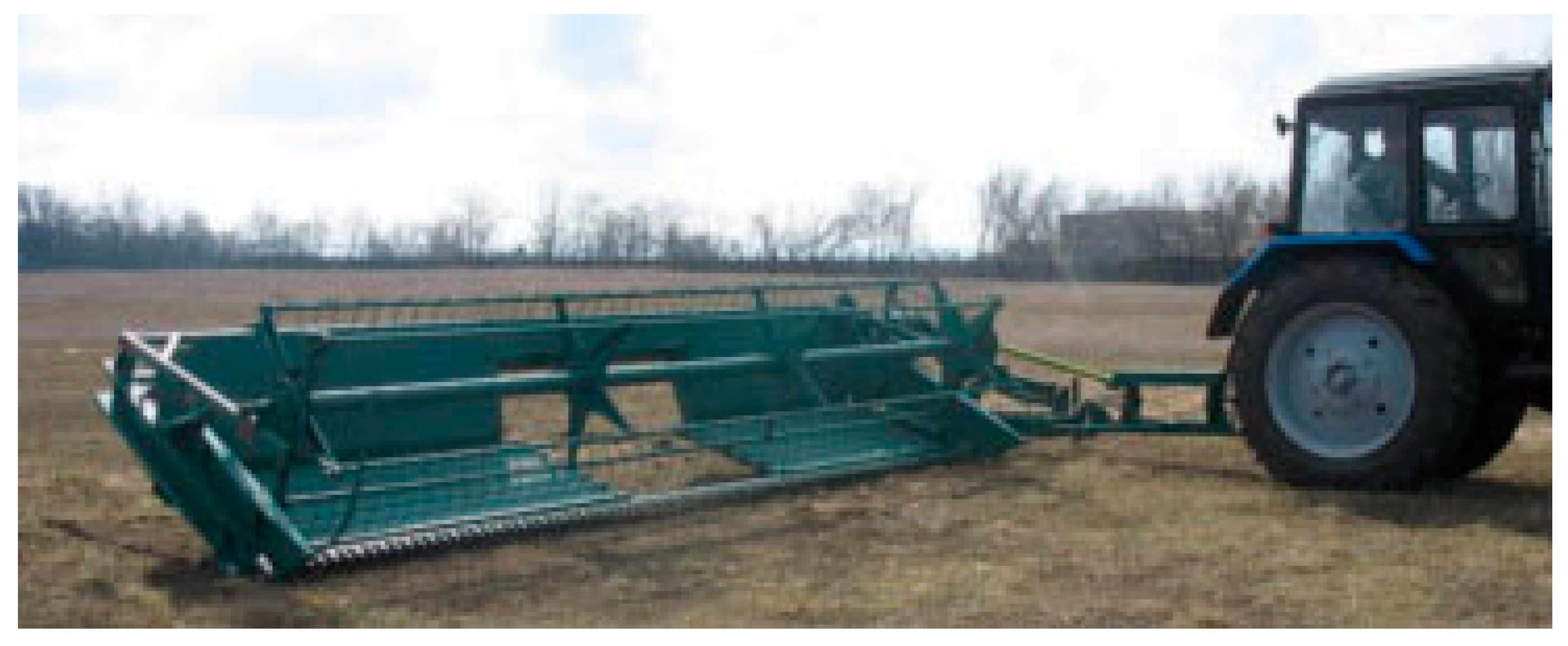
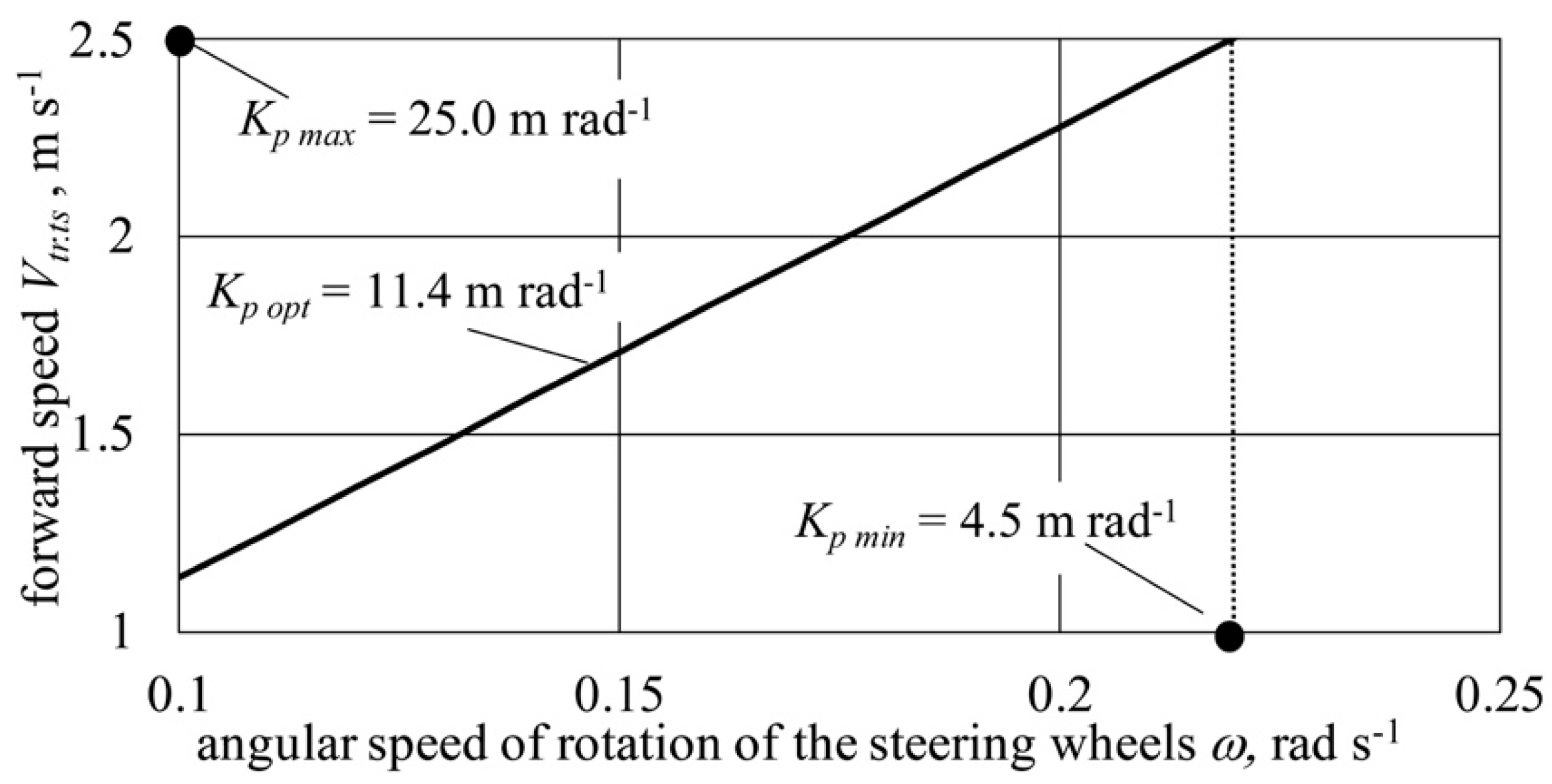
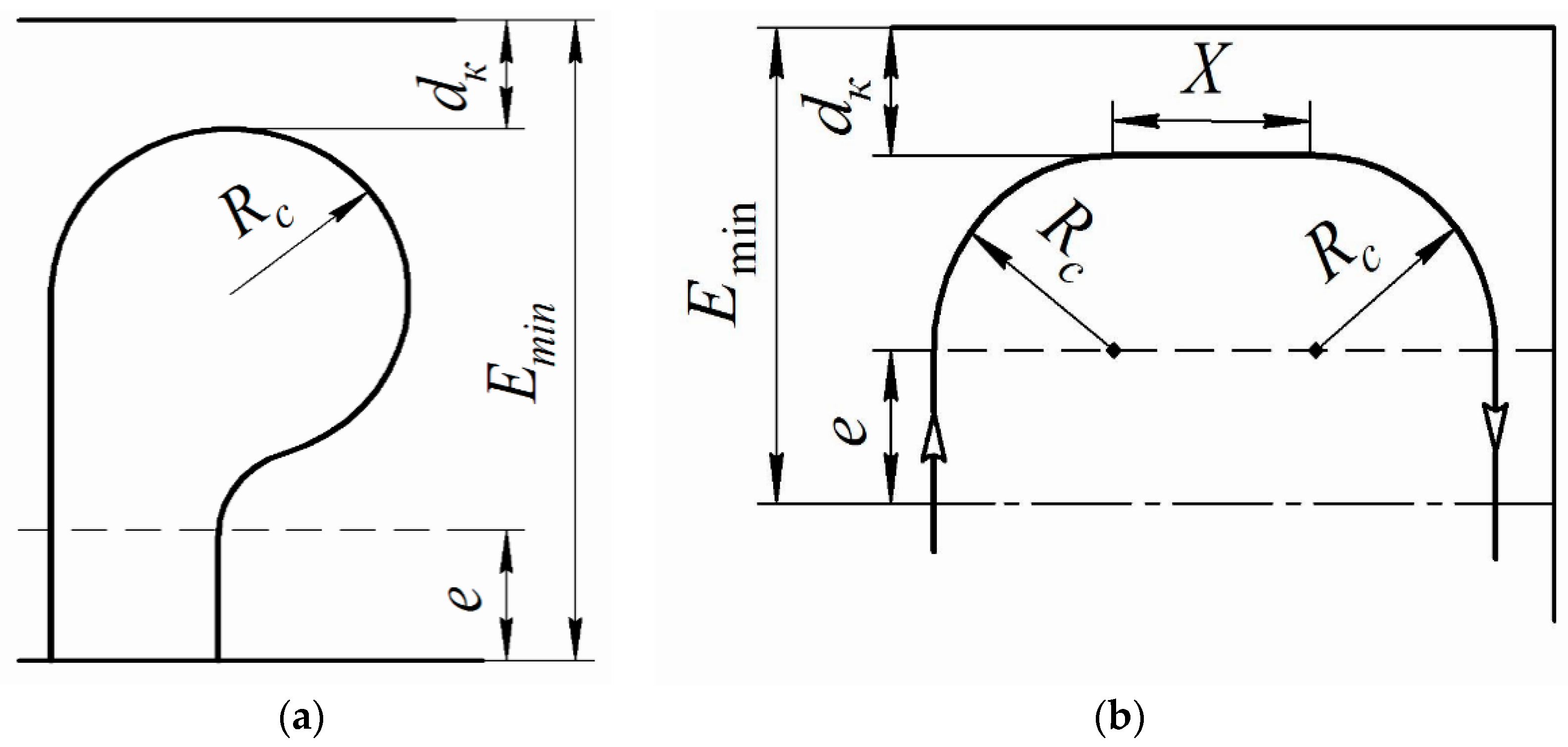
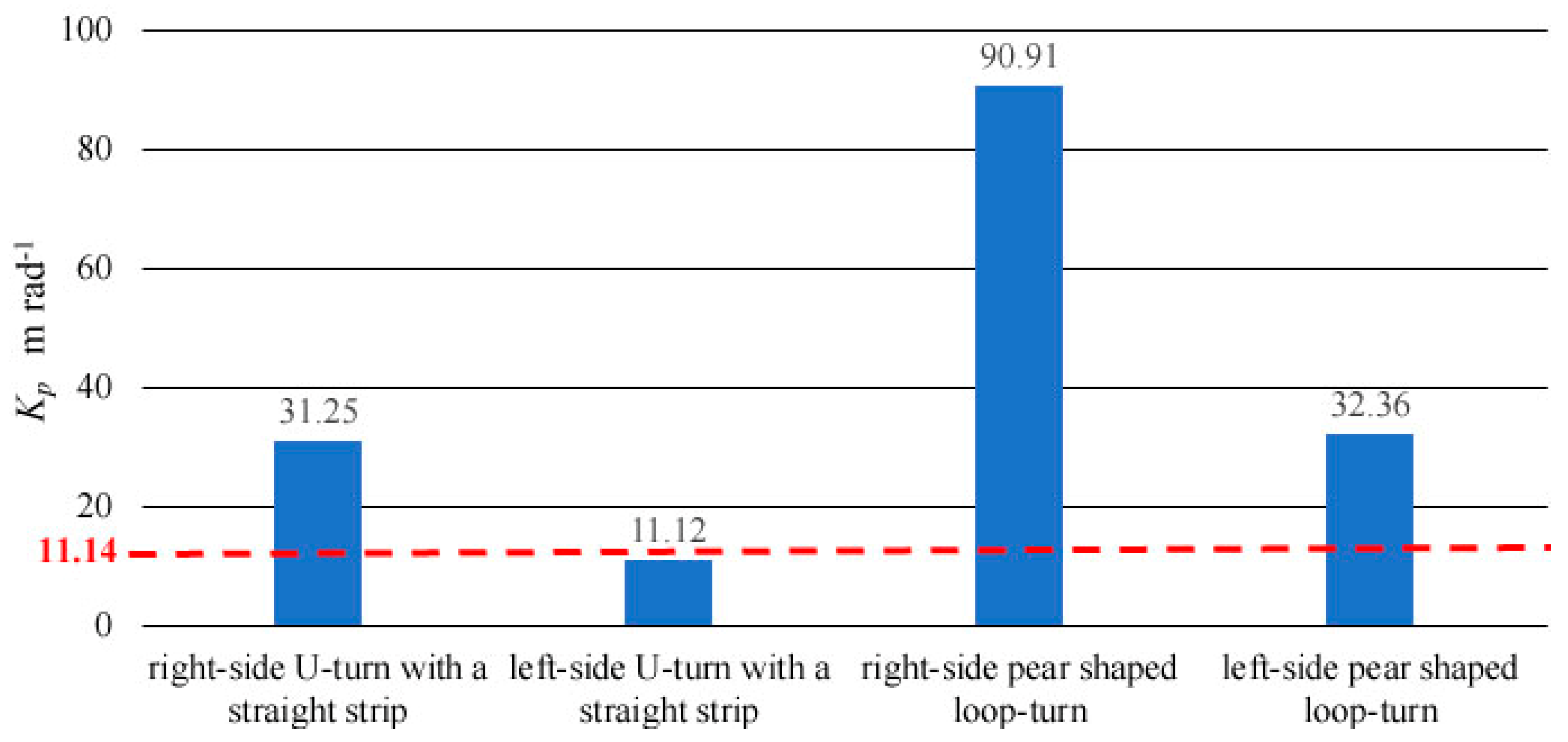
© 2019 by the authors. Licensee MDPI, Basel, Switzerland. This article is an open access article distributed under the terms and conditions of the Creative Commons Attribution (CC BY) license (http://creativecommons.org/licenses/by/4.0/).
Share and Cite
Bulgakov, V.; Pascuzzi, S.; Beloev, H.; Ivanovs, S. Theoretical Investigations of the Headland Turning Agility of a Trailed Asymmetric Implement-and-Tractor Aggregate. Agriculture 2019, 9, 224. https://doi.org/10.3390/agriculture9100224
Bulgakov V, Pascuzzi S, Beloev H, Ivanovs S. Theoretical Investigations of the Headland Turning Agility of a Trailed Asymmetric Implement-and-Tractor Aggregate. Agriculture. 2019; 9(10):224. https://doi.org/10.3390/agriculture9100224
Chicago/Turabian StyleBulgakov, Volodymyr, Simone Pascuzzi, Hristo Beloev, and Semjons Ivanovs. 2019. "Theoretical Investigations of the Headland Turning Agility of a Trailed Asymmetric Implement-and-Tractor Aggregate" Agriculture 9, no. 10: 224. https://doi.org/10.3390/agriculture9100224
APA StyleBulgakov, V., Pascuzzi, S., Beloev, H., & Ivanovs, S. (2019). Theoretical Investigations of the Headland Turning Agility of a Trailed Asymmetric Implement-and-Tractor Aggregate. Agriculture, 9(10), 224. https://doi.org/10.3390/agriculture9100224





